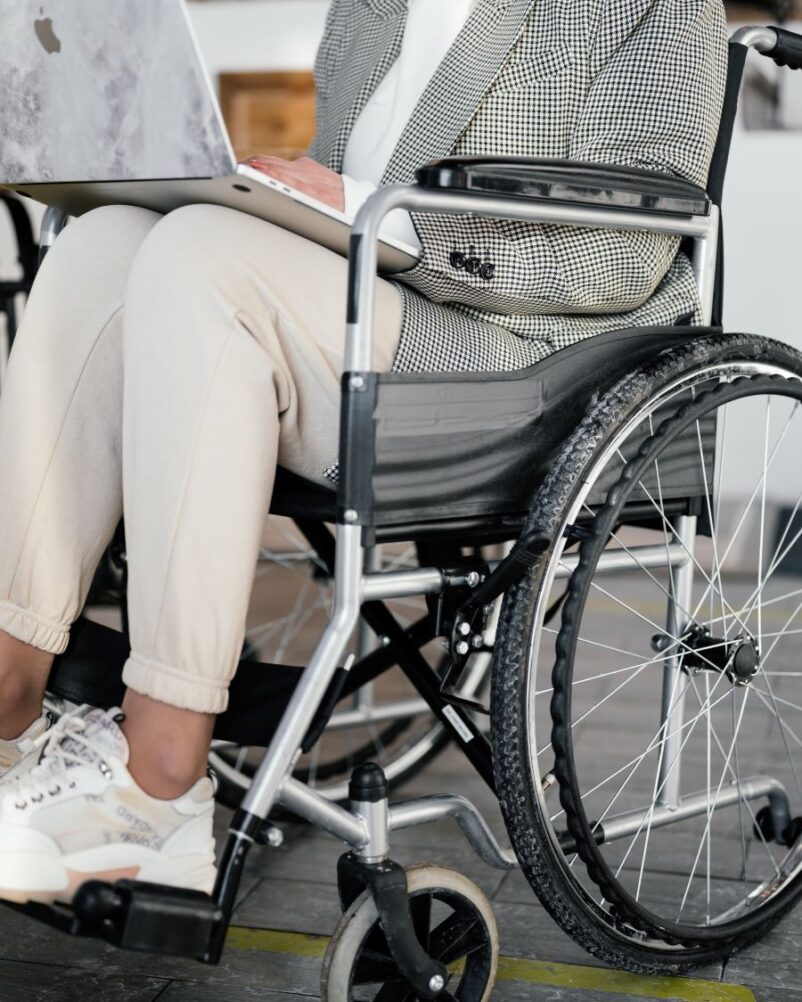
In spite of gains being made to increase disabled travel accessibility for all, barrier-free destinations for seniors aren’t always the reality you hope for. While there are accessible senior-friendly accommodations at many popular destinations, disabled travel remains a concern overall. But, that doesn’t mean you shouldn’t travel. It simply means careful planning and knowing your limitations are important before you plan a big trip.
While disabled travel may mean there are some challenges to some parts of the globe, the great news is that there are ways to conquer the globe at any age or ability. Whether your disability may mean you need a wheelchair, walker, hearing aids, vision goggles or similar aids, or options other than walking, there are places to satisfy your wanderlust and unleash your explorer mentality.
Many individuals have long dreamed of traveling the world, once the retire, only to recognize that physical and mental challenges can sometimes impact plans. More and more countries and companies are recognizing the importance of offering travel accessibility where possible. While far from perfect, more options are available than ever before.
From accessible accommodations to specially designed tours, there are almost endless possibilities for senior disabled travel opportunities. This gives individuals with disabilities the opportunity to explore destinations of their dreams and create unforgettable memories.
So grab your passport and join in on a travel journey of discovery.
The Joys and Challenges of Senior Disabled Travel
Senior disabled travel is an adventure filled with both joys and challenges. The joy comes from the opportunity to explore new places, experience different cultures, and create lasting memories. It allows seniors with disabilities to break free from their daily routine and embrace the world beyond their comfort zone.
However, there are also unique challenges that come with traveling in this situation. One of the biggest challenges is finding accessible accommodations that cater to specific needs.
Many hotels claim to be wheelchair-friendly but still have barriers such as narrow doorways, high beds, or inaccessible bathroom facilities. Planning ahead and doing thorough research can make a huge difference in ensuring a comfortable stay.
Additionally, navigating through airports and public transit systems can be overwhelming for senior disabled travel with mobility issues. However, many countries (but not all) now provide assistance services for travelers with disabilities, including airport escorts and accessible transportation options.
Traveling as a senior with a disability requires careful consideration of health limitations. Seniors who rely on medication must ensure they have enough for the duration of their trip along with necessary documentation if traveling internationally.
It is important to pack appropriately for various weather conditions and understand potential health risks at your destination. Consulting with healthcare professionals regarding any necessary vaccinations or precautions can help mitigate some of these concerns before undergoing senior disabled travel.
Overall, while there may be challenges when choosing disabled travel as a senior, the rewards far outweigh them. With proper planning and support systems in place, seniors can embark on incredible journeys that offer cultural enrichment and personal growth like no other experience can provide.
Planning Ahead: Researching Accessible Destinations and Accommodations
When planning a trip as a senior with a disability, it is essential to research and choose destinations that are truly accessible. Taking the time to research accessible destinations and accommodations can make all the difference in ensuring a smooth and enjoyable (as well as safe) travel experience.
 One way to start is by looking for cities or countries known for their accessibility infrastructure such as ramps, elevators, and wide doorways. This will help eliminate potential obstacles and ensure ease of mobility throughout your trip.
One way to start is by looking for cities or countries known for their accessibility infrastructure such as ramps, elevators, and wide doorways. This will help eliminate potential obstacles and ensure ease of mobility throughout your trip.
In addition to focusing on destination accessibility, it is important to also consider the availability of accessible accommodations. Look for hotels or rental properties that have features such as wheelchair ramps, grab bars in bathrooms, accessible showers or bathtubs, and ample space to maneuver.
Reading reviews from other travelers with disabilities can provide valuable insights into which accommodations truly cater to accessibility needs.
An insight I learned when my husband and I traveled from Europe recently is that many facilities utilize beautiful marble as their flooring. While it is stunning to look at, it is quite slick. I nearly fell in the bathroom at two different hotels, because of water condensation. One hotel had marble in the floor of the shower, and I skated across it and just caught myself.
Furthermore, reaching out to local disability organizations or support groups in your desired destination can give you insider tips on accessible attractions, transportation options like wheelchair-accessible taxis or buses, and any specific challenges you might encounter.
They may have unique recommendations for off-the-beaten-path gems that are fully equipped for disabled seniors without compromising on enjoyment or comfort.
By dedicating time for thorough research when planning your trip and relying on firsthand experiences from other travelers with disabilities, you can create an itinerary designed specifically around accessibility – allowing you to fully embrace an unforgettable travel experience regardless of age or physical condition.
So don’t let any limitations slow down your wanderlust; let them become another aspect of your journey’s uniqueness!
Transportation Options for Disabled Travel
Traveling can be a daunting task, especially for seniors with disabilities. Navigating airports, train stations, and bus terminals can present unique challenges with disabled travel. However, with the right planning and preparation, transportation options can become accessible to everyone.
Airports are often frenetic places, but they offer a range of services for disabled travel passengers. It’s crucial to inform your airline about any specific needs you might have well in advance of your flight. They can often arrange assistance at the airport and help you get through security more quickly.
For those who use mobility aids like wheelchairs or scooters, it’s essential to research whether these can be taken on board the plane or if they need to be checked.
Train travel is another viable option that provides a more comfortable experience for many senior travelers with disabilities. Most trains offer accessible seating and facilities for individuals with limited mobility or visual impairments.
Check with the train company beforehand to ensure there will be staff available to assist you throughout your journey. However, realize that passengers often must very quickly board and disembark from trains before doors close.
Often, there is no porter in sight, regardless of the class of ticket booked. And, depending on the train terminal, there could be numerous steps involved around the platform, including cumbersome ones to get on and off the train.
Have a plan in place and find out what provisions are possible and what you should do to ensure a safe journey.
Buses may also be an attractive mode of transportation due to their affordability and convenience. Many public buses are equipped with ramps or lifts, making them wheelchair accessible. Some transit agencies even provide door-to-door paratransit services specifically designed for seniors and individuals with disabilities.
Having a bus with provisions for disabled travel can make for a rewarding and stress-free trip, but don’t assume that all buses will be equipped in this fashion. The bus tours we took in Europe required several large steps and a turn to board and depart.
Overall, when traveling as a senior with a disability, exploring different transportation options for disabled travel is crucial before embarking on any trip. By understanding the accessibility features offered by airports, trains, and buses—and promptly communicating your needs—you can enjoy travel experiences
Utilizing Travel Resources for Senior Disabled Travel
Traveling with a disability as a senior can seem daunting, but the availability of assistance and support resources makes it more manageable and enjoyable. Consider utilizing specialized travel agencies that cater specifically to individuals with disabilities. These agencies have extensive knowledge of accessibility requirements, offer customized tours and packages, and provide knowledgeable staff who understand the unique needs of disabled travel for seniors.
Another valuable resource is online platforms and mobile applications that provide information on accessible locations, attractions, restaurants, and accommodations around the world. Travel platforms such as TripAdvisor’s Accessible Travel section or apps like AccessNow allow users to search for accessibility features at their desired destinations based on specific criteria like wheelchair accessibility or hearing aid compatibility.
Another one is the STEP program, which is a great resource for anyone, disabled or not.
These platforms rely on user-generated content, so travelers can also contribute by sharing their experiences and recommendations about disabled-friendly places they have visited.
In addition to specialized agencies and online tools, it’s crucial for disabled travel groups to communicate their needs with airlines, hotels or resorts prior to their trip. By informing them in advance about any mobility aids required or specific dietary restrictions due to medical conditions or allergies; they will be able accommodate necessary arrangements seamlessly.
Overall, by taking advantage of available resources such as specialized travel agencies devoted exclusively to catering for disability requirements; digital platforms showcasing disabled-friendly establishments; along with communication between travelers themselves – disabled seniors can feel more confident without missing out on the fun.
Accessibility Aids and Medical Necessities
When it comes to traveling with a disability as a senior, packing the right accessibility aids and medical necessities is crucial for a smooth journey. It’s wise to invest in sturdy walking aids or mobility scooters that can be easily folded and transported. These aids will provide stability and support throughout your trip, allowing you to explore new destinations comfortably.
In addition to mobility aids, it is essential to pack necessary medical supplies such as medication, hearing aids, and glasses. Always carry extra doses of medications in case your travel plans are delayed or changed unexpectedly.
Also, make sure to have your doctor’s contact information handy along with any necessary medical documents so that you can seek assistance easily if needed.
Remember, packing the right accessibility aids and medical necessities not only ensures a worry-free trip but also promotes independence during an adventure when choosing disabled travel.
By prioritizing these items before embarking on your adventure, you’ll feel more confident exploring new places while keeping your health intact. So don’t forget to double-check your packing list before setting off on an unforgettable journey!
Tips for a Smooth Disabled Travel Experience
Traveling with a disability as a senior can be daunting, but by planning ahead and gathering all the necessary information about your destination, you can avoid unpleasant surprises or disabled travel challenges. From accessibility in hotels and restaurants to transportation options, knowing what to expect will help alleviate any potential stress or anxiety.
Don’t forget to embrace flexibility and bring along some extra patience during your trip. While planning is crucial, unexpected situations may arise.
Embracing the art of adaptability can make all the difference in turning potential challenges into memorable moments. Remember that traveling with a disability as a senior is an opportunity for growth, resilience, and creating unique experiences – so enjoy every step along the way!
Enjoying Adventures of Disabled Travel at Any Age
The conclusion of any journey is just as important as the beginning. When it comes to embracing the adventure of travel at any age, including during your senior years and while dealing with a disability, it becomes even more significant.
There is a certain magic that comes with exploring new destinations, meeting different people, and experiencing new cultures. It transcends age and physical limitations, reminding us that life is meant to be lived fully.
Embarking on a travel adventure as a senior with a disability may not be without its challenges, but it can also bring immense rewards. It allows you to break free from the confines of routine and comfort zones, pushing boundaries and discovering new aspects of yourself along the way. Every journey has the power to transform our perspectives, instilling a sense of gratitude and appreciation for the world around us.
Traveling at any age should never be limited by societal expectations or personal reservations. It’s about nurturing curiosity, fostering connections, and embracing the unknown.
So whether you’re in your 60s or 80s, facing mobility challenges or living with chronic conditions, don’t let obstacles discourage you from venturing out into the world. Embrace the adventure wholeheartedly because there’s so much waiting to be discovered on this beautiful planet. 
Disabled Travel Takeaways We Noted On Our Trip Abroad
As I mentioned earlier, Rick and I have recently traveled to Hawaii and Alaska and abroad to Italy, France and Mexico. Neither of us has a disability, although I might characterize myself as having mobility challenges due to a knee that sometimes gives way.
Here are things we experienced that may require extra planning if you have disabled travel concerns.
- If you take guided tours into museum and historical places of interest, know that guides typically use “whispers” where they provide the participants with earbuds and quietly talk through points of interest using a designated radio channel frequency without disturbing others.
If you are hearing impaired, it can create significant challenges of hearing the guide. Some tours offer specialty tours for the hearing impaired, so make sure you book those.
- Mobility is also a major factor when participating in a walking tour. Guides take their participants and go on the move—quite quickly.
We noted that even younger individuals in their 20s and 30s sometimes struggled to keep us just as much as we did. That’s because the tours are on a tight schedule and guides are required to get you to the spots you want to see within the time allotted.
In fact, their tips depend on it. That means your job is to follow your guide at a very brisk pace while navigating uneven terrain and large crowds. They usually hold something up so you can keep them in your line of sight, but during peak tourist season, it’s easier said than done.
- Lack of elevators and stair rails are common in historical areas. To make certain attractions accessible would essentially require rebuilding the site, and authentic architecture is fiercely guarded, especially overseas. Make sure you read the descriptions carefully.
- Not all rooms are handicap accessible, especially abroad. Many rooms are quaint, but that also means they are small and often are inns that used to be manors or historical sites.
Bathrooms are often tiny. Finding a large room or suite may be beyond the budget of many, so make sure you call and ask what is available.
- Sites that say a “short hike” to the destination is required may not fully describe how far or what type of conditions. Does it mean leaving a sidewalk area and navigating an off-road trail? Gravel? Steps? Or does it simply mean it is a short distance from where you park. Be sure to read the details.
- Stairs are one of the greatest challenges in travel. Even seemingly harmless steps, like entering a large motorcoach or boarding a train, can be difficult if you require mobility aids. Add in slippery and/or uneven conditions, and you need to be sure you physically can do something before you find yourself in endangering your health.
- People are generally helpful, but only to a point. They are on vacation as well and eager to see the sites and don’t want to miss out. Make sure you have a backup plan in place if disabled travel challenges occur. It’s perfectly okay to sit one out, and rejoin the group at the next stop!
More Senior Denial Travel Blogs You Might Enjoy Reading
Travel tops the list of older Americans. And there’s no better time to explore the United States and World than right now.
Here are tips and ideas to the most enjoyment from your travel adventures.
- Travel to Europe Requires a New Approval in 2024: What You Should Know
- How Passport Processing DelaysContinue Grounding Big Travel Dreams
- 7 Senior Travel Musts for Trips Requiring Extensive Walking
- Northern Lights Forecast: Why A Trip Now May Be Your Best Time
- Senior Rewards Programs: Do They Pay Off?
- Know These Mobility Challenges Before You Travel Abroad
Written by
Robin McClure
Robin is the author of 7 parenting books and has 3 grown children, 3 spoiled rescue dogs, and a very understanding husband. She holds a bachelor's degree in journalism and a master's degree in communications, and spends her time writing, drinking coffee, and planning the next grand adventure.



